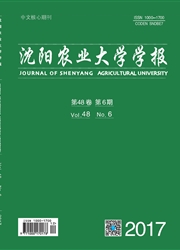

 中文摘要:
中文摘要:
以椰壳为原料,采用CO2为活化剂制备椰壳基活性炭(AC-1),通过对AC-1依次进行水蒸汽和铁催化-水蒸汽二次活化,制得含有较高中孔比率的活性炭(AC-2、AC-3)。孔径分析结果表明:二次活化法显著提高活性炭(AC)的中孔比率,中孔比率由11.54%(AC-1)依次提高到75%(AC-2)和78%(AC-3)。电化学测试表明:提高AC的中孔比率,有利于提高循环伏安的响应电流密度、活性炭材料的导电性和电解液离子在活性炭孔道内输运能力。当放电电流密度为500mA.g-1时,3个样品的容量由140F.g-1(AC-1)依次提高到166F.g-1(AC-2)和240F.g-1(AC-3),容量保持率分别为68%(AC-1)、78%(AC-1)和80%(AC-3)。说明减少小微孔(〈0.7nm),增加中孔,有利于提高放电容量以及容量保持率。
 英文摘要:
英文摘要:
Activated carbon (AC) was prepared by CO2 activation of coconut shell, and then the ACs with higher mesopore ratio were obtained by steam activation and by impregnating iron catalyst followed by steam activation, respectively. The pore size distribution showed that the mesopore ratios of the ACs were significantly increased by reactivation with steam or catalyst, up to 75% and 78%, respectively. The electrochemical tests indicated that with the increase of the mesopore ratios of the ACs, the current densities were evidently enhanced through the cyclic vohammery test at 50mV .s-1 scan rate. The electrochemical impedance spectroscopy displayed that the conductivity and ion transport performance of the ACs were improved. At 500mA .g-1current density, the capacitances of ACs were increased from 140F-g-1 (AC-l) to 166F·g-1 (AC-2) and 240F.g-1 (AC-3), respectively. The capacitance retention ratios were 68% (AC-1), 78% (AC-1) and 80% (AC-3), respectively. Results showed that the decrease of small micropores content (〈0.7nm) and the increase of the mesopores content were favorable to improve the performances of the power discharge and the capacitance retention ratio.
 同期刊论文项目
同期刊论文项目
 同项目期刊论文
同项目期刊论文
 Carbon nanotubes coated with a nitrogen-doped carbon layer and its enhanced electrochemical capacita
Carbon nanotubes coated with a nitrogen-doped carbon layer and its enhanced electrochemical capacita 期刊信息
期刊信息
